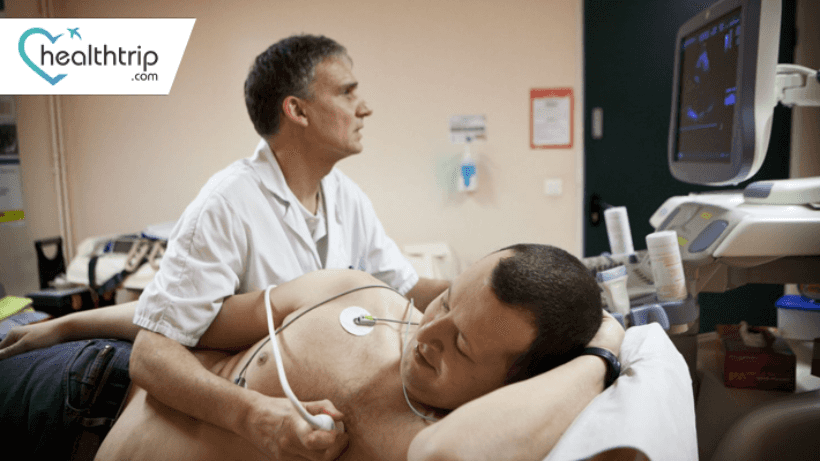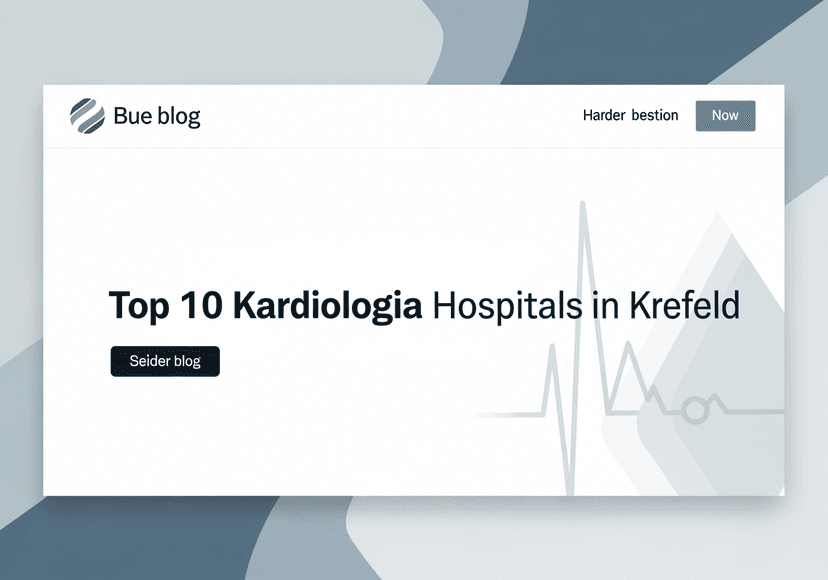
Unveiling the Power of Echocardiography in Heart Health
09 Sep, 2023
 Healthtrip
HealthtripIntroduction
In the realm of modern medicine, the pursuit of precision in diagnostics is paramount, especially when it comes to matters of the heart. Enter the Echo Test, a remarkable tool in cardiology that provides invaluable insights into cardiac health. In this comprehensive blog, we will embark on a journey to explore the Echo Test, understanding its purpose, procedure, types, significance, and the pivotal role it plays in safeguarding heart health.
1. Unveiling the Echo Test
1.1 The Echo of Cardiac Health
At its core, the Echo Test, or echocardiography, employs ultrasound technology to create detailed images of the heart's structure and function. These real-time images, known as echocardiograms, offer a window into the intricate workings of this vital organ.
Most popular procedures in India
2. Significance of the Echo Test
2.1 A Multifaceted Diagnostic Tool
The Echo Test is a cornerstone of modern cardiology, serving multiple critical purposes:
- Heart Function Assessment: It measures the heart's ability to pump blood efficiently, often quantified as ejection fraction.
- Valve Health Examination: It evaluates the condition and function of heart valves, crucial for maintaining proper blood flow.
- Cardiac Structure Analysis: It detects abnormalities in heart chambers and identifies congenital heart defects.
3. The Echo Test Procedure
3.1 Non-Invasive Insight
The Echo Test stands as a non-invasive, painless procedure. Here's what you can expect:
Wellness Treatments
Give yourself the time to relax
Lowest Prices Guaranteed!

Lowest Prices Guaranteed!
- Gel Application: A transparent gel is applied to the chest area to facilitate sound wave transmission.
- Transducer Magic: A skilled technician employs a handheld device called a transducer, gently maneuvering it across the chest to capture the desired images.
- Live Imaging: The transducer sends and receives sound waves, generating real-time echocardiogram images that provide a dynamic view of the heart's activities.
4. Types of Echo Tests
4.1 Transthoracic Echo (TTE)
The most common form, TTE involves moving the transducer over the chest's surface, offering a comprehensive assessment of heart health.
4.2 Transesophageal Echo (TEE)
For more detailed views, TEE employs a specialized transducer inserted into the esophagus, allowing for close examination of the heart's rear and its valves.
4.3 Stress Echo
Combining echocardiography with physical exercise or medication, Stress Echo assesses the heart's response to stress, aiding in the detection of coronary artery disease.
5. Echo Test Results Interpretation
5.1. Ejection Fraction (EF)
One of the key parameters assessed in Echo Test results is the ejection fraction (EF). This measurement indicates the heart's pumping efficiency and is expressed as a percentage. The normal range for EF is typically between 50% and 70%. A lower EF may indicate a weakened heart muscle, which can be a sign of heart failure or other cardiac conditions.
5.2. Valve Function
Echocardiography assesses the function of heart valves, including the mitral valve, aortic valve, tricuspid valve, and pulmonary valve. The evaluation includes:
- Stenosis: Narrowing of a heart valve, which can restrict blood flow.
- Regurgitation: Backflow of blood through a valve due to incomplete closure.
- Prolapse: Abnormal bulging or billowing of a valve leaflet.
The severity of valve dysfunction is graded, helping determine the need for intervention or surgical repair.
5.3. Chamber Size and Thickness
The size and thickness of the heart's chambers are evaluated through echocardiography. Abnormalities in chamber size and wall thickness can indicate various cardiac conditions, including hypertrophy (enlargement) or dilation (enlargement) of the heart chambers.
6. Beyond Diagnosis: The Versatility of Echo Tests
6.1 Ongoing Monitoring
For individuals with chronic heart conditions, Echo Tests are indispensable tools for monitoring disease progression, ensuring treatments remain effective.
6.2 Preoperative Precision
Before heart surgeries or procedures, Echo Tests provide surgeons with vital insights, ensuring surgical plans align with the patient's unique cardiac structure.
6.3 Guiding Medical Procedures
In various medical interventions, real-time echocardiography assists in instrument placement, enhancing precision and safety.
6.4 Pediatric Cardiology
In the world of pediatric cardiology, Echo Tests are vital for diagnosing and monitoring congenital heart defects in infants and children.
6.5 Detecting Clots and Emboli
Echocardiography can identify potentially life-threatening blood clots or emboli within the heart, aiding in early intervention.
7. The Future: Advancements in Echocardiography
Echocardiography, the invaluable tool for assessing heart health, is poised for a future marked by groundbreaking advancements and technologies that will revolutionize the field. Here's a glimpse into the exciting developments that lie ahead:
7.1. Artificial Intelligence (AI) and Machine Learning
The integration of AI and machine learning is set to transform echocardiography. These technologies will enhance diagnostic accuracy by rapidly and accurately analyzing echocardiogram images. AI-driven algorithms will assist in detecting subtle abnormalities, improving early diagnosis, and aiding in the interpretation of complex data.
7.2. Portable and Wearable Echocardiography Devices
Advances in miniaturization are making portable and even wearable echocardiography devices more accessible. These innovations will enable point-of-care echocardiography in diverse clinical settings, including rural areas, emergency departments, and patient homes, facilitating quicker assessments and reducing the burden on healthcare facilities.
7.3. 3D and 4D Echocardiography
The continued evolution of three-dimensional (3D) and four-dimensional (4D) echocardiography will offer unprecedented insights into cardiac structures and function. These advanced imaging techniques will provide a more comprehensive understanding of the heart's dynamics, improving diagnostic accuracy and patient care.
How can we help with the treatment?
If you're on the lookout for treatment in India, Thailand, Singapore, Malaysia, UAE, and Turkey, let Healthtrip be your compass. We will serve as your guide throughout your medical treatment. We'll be by your side, in person, even before your medical journey commences. The following will be provided to you:
- Connect with renowned doctors from a network spanning 35+ countries and access the world's largest health travel platform.
- Collaboration with 335+ top hospitals , including Fortis and Medanta.
- Comprehensive treatments from Neuro to Cardiac to Transplants, Aesthetics, and Wellness.
- Post-treatment care and assistance.
- Teleconsultations at $1/minute with leading surgeons.
- Trusted by 44,000+ patients for appointments, travel, visa, and forex assistance.
- Access top treatments and packages, such as Angiograms and many more.
- Gain insights from genuine patient experiences and testimonials.
- Stay updated with our medical blog.
- 24/7 unwavering support, from hospital formalities to travel arrangements or emergencies.
- Pre-scheduled specialist appointments.
- Prompt emergency assistance, ensuring safety.
Our success stories
In conclusion, interpreting Echo Test results is a complex and specialized task that requires a deep understanding of cardiac physiology and pathology. Cardiologists and healthcare providers use the information gleaned from echocardiograms to make informed decisions regarding patient care, ensuring timely diagnosis and appropriate treatment for a wide range of cardiac conditions.
Related Blogs

Top 5 Heart Surgeons in Krefeld
Find expert cardiology specialists in Krefeld, Germany recommended by HealthTrip.

Top 10 Cardiology Hospitals in Krefeld
Discover the leading cardiology hospitals in Krefeld, Germany with HealthTrip.

Top 5 Heart Surgeons in Berlin
Find expert cardiology specialists in Berlin, Germany recommended by HealthTrip.

Top 10 Cardiology Hospitals in Berlin
Discover the leading cardiology hospitals in Berlin, Germany with HealthTrip.

Top 5 Heart Surgeons in Schwerin
Find expert cardiology specialists in Schwerin, Germany recommended by HealthTrip.

Top 10 Cardiology Hospitals in Schwerin
Discover the leading cardiology hospitals in Schwerin, Germany with HealthTrip.










